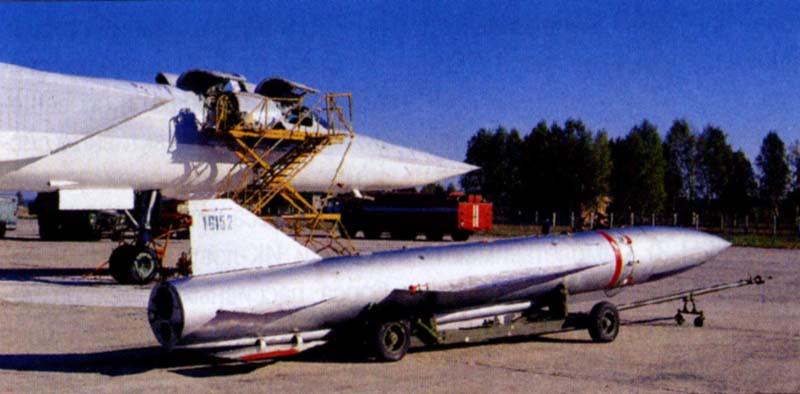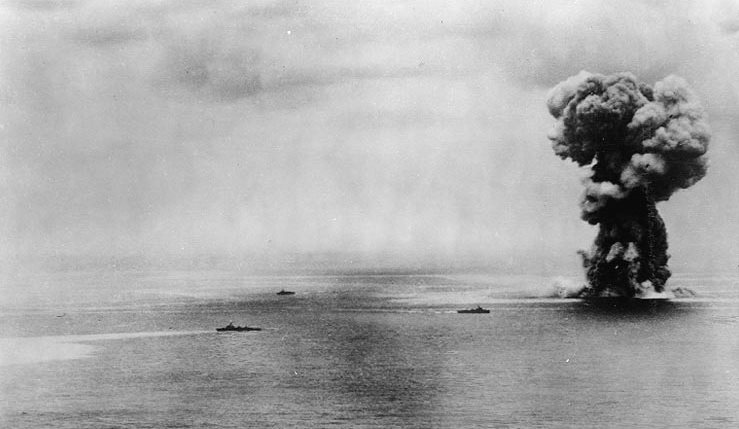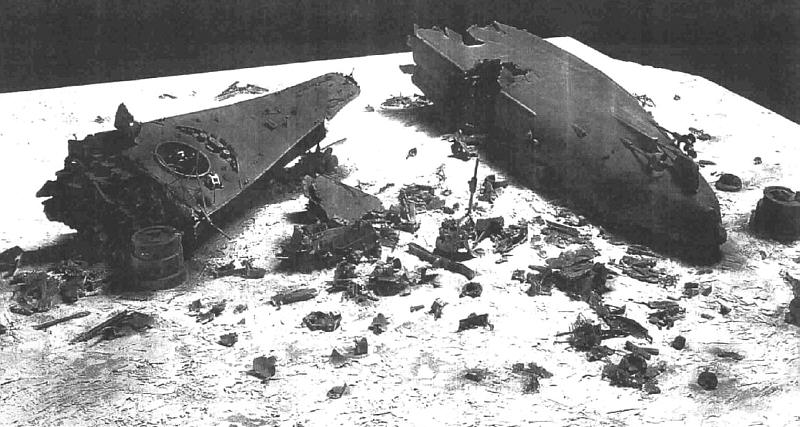zon95
FULL MEMBER

- Joined
- Jul 13, 2011
- Messages
- 224
- Reaction score
- 0
Iowa Class: Armor Protection
One of the main characteristics of a battleship is its ability to withstand an attack. Few ships from the past and no modern ships can equal the survivability of the Iowa Class Battleships. The decision of where to armor and how much armor to use is a very complicated and sometimes frustrating process. Simply adding armor can not be done since this greatly increases weight and reduces the top speed of the ship. The process of protecting a battleship is an art that has been perfected over decades of battleship design. Iowa Class Battleships are an excellent example of superior armor protection and high top speed.
The armor systems of the Iowa Class ships can be divided into two basic sections. First is the above water armor, which is designed to protect the ship against gun fire and aerial bombing. The second is the below water armor (side protective and triple bottom armor), which is designed to protect the vessel from mines, near miss bombs and of course, torpedoes.
All the systems needed to keep these ship's combat effective such as magazines, engineering spaces, steering, plotting rooms, command & control, weapons, etc. are protected by heavy armor. The armor box, referred to as the citadel, extends from just forward of Turret 1 to just aft of Turret III. The top, sides and ends of the citadel are heavily armored, however the bottom is not ballistically protected. Critical systems located outside the citadel such as the turrets, conning tower, fire control, directors, etc. are armored extensions of the citadel...
Iowa Class: Armor Protection - Naval History Forums
The Armor:
Armor
The second basic factor, after firepower, to be considered was Iowa class armor. The armor scheme was a copy of the armor used on North Carolina and South Dakota, only thicker. This armor could, in theory, stop a 16-inch shell coming in at a 45-degree angle. There was some idle talk about making the Iowa class armor tough enough to stop an 18-inch shell, but BDAB dropped the idea when it realized how much more weight and redesign work it would take.
Nickel-steel was used to manufacture the armor. This type of steel is a kind of stainless steel which has the added benefits that it does not corrode quickly, but bends easily. Nickel-steel was not a new material. From the start, armored warships like USS Indiana (BB-1) used this type of steel. One 17 1/2 inch belt of the nickel-steel ran from the deck to the below water line on both sides of the ship and covered the middle 2/3 of the ship. Eighteen inch plates were used in the turrets and 11 1/2 inch plates were placed on the decks.
It is interesting to note that much of the Iowa class's armor is just as thick as battleships built 50 years earlier. Wisconsin and her sisters, however, benefitted from advances in steel technology that allowed mills to forge the steel at higher temperatures and heat treatment, which in turn produced a much higher quality steel that was stronger and more elastic. Two plants, Bethehelm Steel's main mill in Bethehelm, PA and Luken Steel's Coatsville mill just ouside Phildadelphia, manufactured most of the armor plating. For the turret plate, however, a special forge was constructed just for the Iowa-class at the Charleston Ordnance Works in Charleston, WV...
http://www.globalsecurity.org/military/systems/ship/bb-61-design.htm
Thus, all of today's anti-ship missiles (example: Kh-35/31, RGM-84, Exocet, C-803, YJ-18, LRASM, P-270/700/800/1000, NSM, TLAM Block IV, Brahmos.....) can not do anything with the armor of Iowa, unless they attack in large numbers (100 or more)
One of the main characteristics of a battleship is its ability to withstand an attack. Few ships from the past and no modern ships can equal the survivability of the Iowa Class Battleships. The decision of where to armor and how much armor to use is a very complicated and sometimes frustrating process. Simply adding armor can not be done since this greatly increases weight and reduces the top speed of the ship. The process of protecting a battleship is an art that has been perfected over decades of battleship design. Iowa Class Battleships are an excellent example of superior armor protection and high top speed.
The armor systems of the Iowa Class ships can be divided into two basic sections. First is the above water armor, which is designed to protect the ship against gun fire and aerial bombing. The second is the below water armor (side protective and triple bottom armor), which is designed to protect the vessel from mines, near miss bombs and of course, torpedoes.
All the systems needed to keep these ship's combat effective such as magazines, engineering spaces, steering, plotting rooms, command & control, weapons, etc. are protected by heavy armor. The armor box, referred to as the citadel, extends from just forward of Turret 1 to just aft of Turret III. The top, sides and ends of the citadel are heavily armored, however the bottom is not ballistically protected. Critical systems located outside the citadel such as the turrets, conning tower, fire control, directors, etc. are armored extensions of the citadel...
Iowa Class: Armor Protection - Naval History Forums
The Armor:
Armor
The second basic factor, after firepower, to be considered was Iowa class armor. The armor scheme was a copy of the armor used on North Carolina and South Dakota, only thicker. This armor could, in theory, stop a 16-inch shell coming in at a 45-degree angle. There was some idle talk about making the Iowa class armor tough enough to stop an 18-inch shell, but BDAB dropped the idea when it realized how much more weight and redesign work it would take.
Nickel-steel was used to manufacture the armor. This type of steel is a kind of stainless steel which has the added benefits that it does not corrode quickly, but bends easily. Nickel-steel was not a new material. From the start, armored warships like USS Indiana (BB-1) used this type of steel. One 17 1/2 inch belt of the nickel-steel ran from the deck to the below water line on both sides of the ship and covered the middle 2/3 of the ship. Eighteen inch plates were used in the turrets and 11 1/2 inch plates were placed on the decks.
It is interesting to note that much of the Iowa class's armor is just as thick as battleships built 50 years earlier. Wisconsin and her sisters, however, benefitted from advances in steel technology that allowed mills to forge the steel at higher temperatures and heat treatment, which in turn produced a much higher quality steel that was stronger and more elastic. Two plants, Bethehelm Steel's main mill in Bethehelm, PA and Luken Steel's Coatsville mill just ouside Phildadelphia, manufactured most of the armor plating. For the turret plate, however, a special forge was constructed just for the Iowa-class at the Charleston Ordnance Works in Charleston, WV...
http://www.globalsecurity.org/military/systems/ship/bb-61-design.htm
Thus, all of today's anti-ship missiles (example: Kh-35/31, RGM-84, Exocet, C-803, YJ-18, LRASM, P-270/700/800/1000, NSM, TLAM Block IV, Brahmos.....) can not do anything with the armor of Iowa, unless they attack in large numbers (100 or more)













